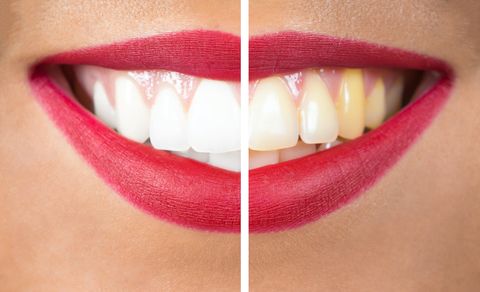Worried about stains forming on your pearly white smile? Diligent oral hygiene and good oral habits can help you keep your teeth bright and beautiful. But over time, you could see dental discoloration affect your smile, disrupting your dental aesthetics.
You may also notice that discoloration can present in many different ways. You can better preserve your tooth color when you know more about these stains and their differences. Find four types of dental discoloration as well as what they may mean for your oral health when you read on.

Brown or Black Tooth Stains
A dark stain on the surface of a tooth can appear harsh against the normally white color of your smile. In many cases, these stains come from the substances you consume. Dark-colored foods or drinks get their color from tannins, particles that can transfer to your teeth and absorb into your enamel.
This can leave dark discoloration behind on your smile that your toothbrush cannot reach to scrub away. A dentist can recommend teeth whitening that may lift and dissolve these stains, but ideally you should pay attention to your diet to ensure that it does not harm your tooth color.
Sometimes these dark tooth stains can be a symptom of a dental issue like a cavity. So do not ignore dental discoloration. Make sure your dentist evaluates the aesthetic concern to provide appropriate treatment.
Yellow Tooth Color
If your teeth seem to darken to a yellow color, this might also happen due to staining agents in the substances you consume. However, this can occur as a side effect of dental erosion too.
Enamel covers the surface of each tooth like a protective shield. Though durable, this layer can suffer damage over time. If it erodes due to poor oral hygiene or an acidic diet, it can reveal the underlying dentin within the tooth. This will appear yellowish.
Enamel does not regrow or repair itself. So you will need to speak to your dentist to restore your dental structure and find a whitening solution for your smile.
Grayness or Dullness in the Teeth
Do your teeth seem dull in color or appear gray? This type of discoloration might point to a condition called non-vital tooth pulp.
The pulp of the tooth contains blood vessels that keep the tooth healthy. If you suffer an injury, such as a blow to the face, that damages these vessels enough to block blood flow to the tooth, the pulp can become non-vital. One side effect is a gray appearance in the tooth’s exterior.
This does not always warrant emergency dental treatment. But it may make the tooth more likely to suffer an infection. The dentist will want to monitor the tooth closely in this case. And they can recommend veneers or bonding treatment that can help you address the change in the tooth’s color.
Creamy White Spots on the Teeth
Though you want to maintain a white and bright smile, creamy white spots on the tooth can make your smile appear uneven. This dental discoloration may mean you have hypocalcification, also known as a lack of calcium in the teeth.
The problem also means your teeth have weak spots that could heighten the risk of decay. Discuss cosmetic and restorative dental solutions to strengthen and brighten your teeth in the wake of this condition with your dentist when you book a dental consultation.
